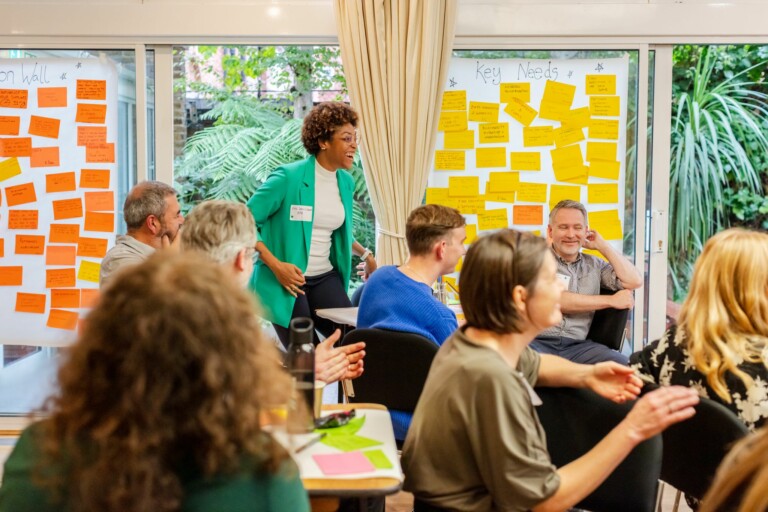Challenges and Opportunities in Commercial Retrofit
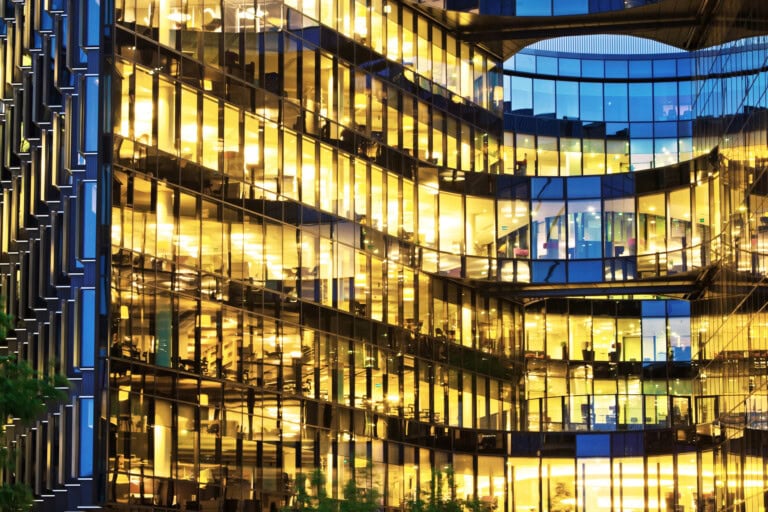
If the most sustainable building is one that already exists, then why is retrofitting a building still so challenging?
This is the central question that the UKGBC Non-Domestic Retrofit Forum has sought to answer through a series of meetings and workshops over the last nine months.
The Forum comprised practitioners across the built environment value chain, from those who design and consult, those who construct and deliver, and those who manage and occupy buildings. Building on the UKGBC report “Building the Case for Net Zero: Retrofitting Office Buildings”, we have reflected on common challenges faced by the sector when delivering retrofit of non-domestic buildings, and identified solutions that can be scaled or shared to accelerate uptake.
The purpose of retrofitting a building is, in essence, to upgrade it to meet current or preferably future standards, to futureproof operations and to enhance its long-term value. A successful retrofit strategy considers not only the current conditions of the building (e.g. occupant needs, building defects) but also exposure to future climate risks, regulatory requirements, and changes to energy infrastructure. As a result, the process often requires deep technical expertise from a wide range of disciplines as well as buy-in from different stakeholder groups from an early stage.
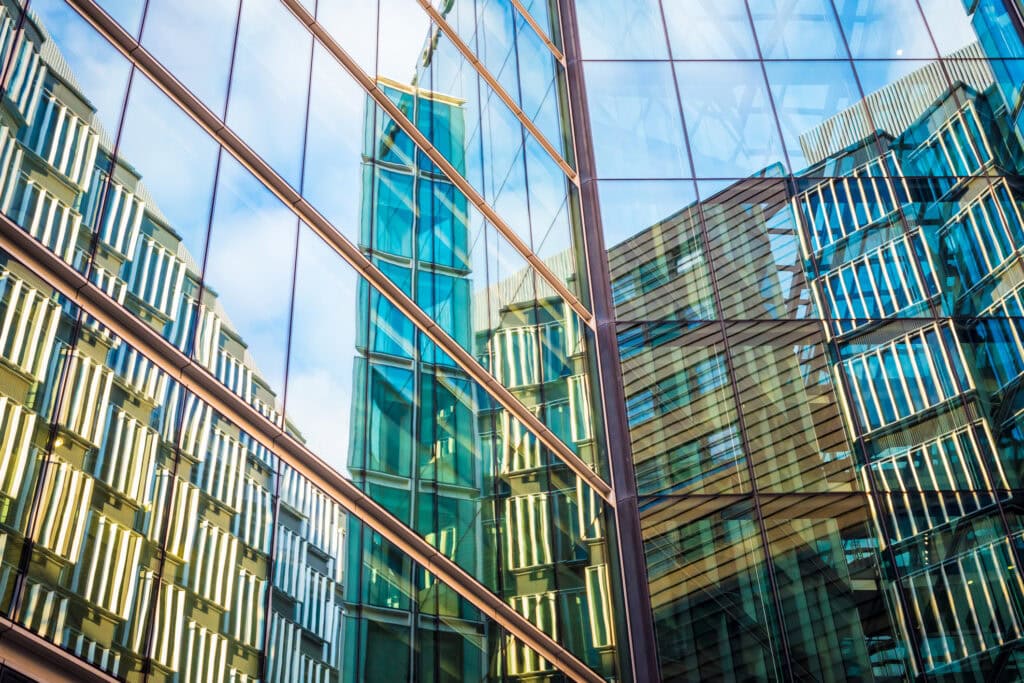
Here we dissect three common challenges relating to retrofit works and share examples of overcoming them to successfully deliver sustainable outcomes and long-term value.
Maximising Value from Retrofit
Minimising Disruption during Retrofit
Avoiding Unintended Consequences
Maximising Value from Retrofit
Take time to get the baseline performance understood, then frame the business case with a retrofit pathway”
Austen Bates, sustainability director at ramboll
Retrofit projects are often delayed or abandoned due to lack of an obvious ‘return on investment (ROI)’. To capture the full value proposition, it is essential to define clear objectives, such as energy savings, reduced maintenance costs, or increased property value, from the outset. These goals will help frame the benefits of renovation in terms of immediate and long-term financial gains. Careful planning and iterative studies on cost, carbon, and leasing impacts are crucial to maximise value to both the building owner and the occupier.
Measuring Performance
Before embarking on a retrofit project, it is important to assess a building’s current performance to identify the most necessary and cost-effective interventions. The great thing about designing a retrofit for an operational building is the ability to use real operational data to design the new systems, instead of relying on theoretical assumptions. This data should include historic energy consumption, maintenance costs, and operational efficiency. It is key to comparing post-retrofit performance.
Case study: 3 Sheldon Square
The 3 Sheldon Square project, a British Land commercial office retrofit in Paddington, successfully retained the façade and key building services while achieving NABERS Design for Performance 4.5 stars and BREEAM Outstanding ratings. By retaining key MEP plant, the project saved 30% on building services installation costs without compromising performance. The project sought to future-proof the building while also enhancing occupier experience and wellbeing. To achieve this, balconies were added to the existing façade, creating valuable external amenities and opportunities for landscaping. This retrofit resulted in high leasing velocity for the building, with one occupier leasing seven floors.
Key Takeaway – This project demonstrates that reusing existing building elements can significantly reduce costs while enhancing occupier experience and building performance.
Photo from Morris + Company Architects
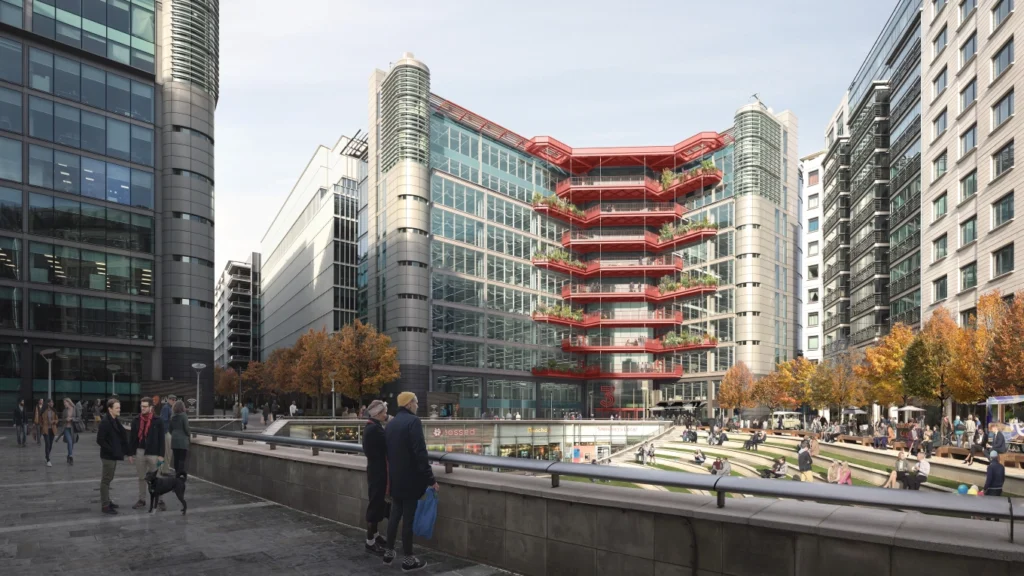
Funding Arrangements
For multi-let buildings, it is key for the building owner or operator to engage with the occupiers in the funding process. Occupiers who benefit from reduced energy costs and improved building performance may be willing to contribute to retrofit costs through adjusted lease agreements. Building owners or operators can identify and quantify opportunities by utilising the building’s Planned, Preventative, and Maintenance and Business Plans. Technology can help by leveraging smart building technologies to collect real-time data on building performance, providing accurate and timely insights into the effectiveness of the work and informing the next project’s business case for retrofit.
Useful resource: CBRE’s Sustainability Index tracks the investment performance of energy-efficient buildings against less efficient properties, highlighting differences in capital growth, returns, and rental value. This supports the financial case for retrofitting inefficient buildings.
The solutions, technology and expertise exist today – if you aren’t retrofitting now, you should be planning for it”
chris newman, zero carbon design manager at mitsubishi electric uk
Minimising Disruption during Retrofit
Deep retrofit refers to works to enhance a building’s long-term prospects, going beyond the removal of on-site gas systems, and often involving more intrusive and expensive fabric upgrades. Taking a holistic approach during the planning stage is crucial to capture impacts on occupiers and neighbours, changes in energy demand on the grid, operational costs and expected rental value post-retrofit. Managing these various aspects through effective phasing, occupier engagement, and clear communication is key to success.
Case study: Unnamed c. 18,000 sq/m office refurbishment project on behalf of Hollis Global
The key occupier of this early 2000s office building in London engaged a team of specialists to identify a workplace that aligned with their ambitious sustainability goals. Their priority was securing a net zero carbon workspace with best-in-class environmental credentials. To retain this premium occupier, the landlord developed a comprehensive refurbishment strategy, focused on the decarbonisation of building services, targeting NABERS 4.5-star rating, alongside BREEAM RFO Excellent and WELL Gold certifications. Circular economy principles were embedded throughout, enabling the reuse of raised access floors, ceiling panels, fan coil units, and glass partitions. This approach limited embodied carbon to under 225 kgCO₂/m². By comparing the whole life carbon impact of the proposed refurbishment against that of a new-build office in the City of London, the project presented a compelling sustainability narrative – one that ultimately led the occupier to renew their lease for an additional 15 years.
To facilitate the works, the occupier was temporarily relocated to a ‘swing space’, ensuring business continuity and minimising rental income disruption. The result was a future-proofed asset aligned with the Net Zero Carbon 2050 trajectory and a long-term commitment from a sustainability-driven occupier.
Key Takeaway – Lease breaks/ends are opportunities for landlords/asset managers to enhance building performance, to future proof them or reposition them, so plan in advance with a team of specialists.
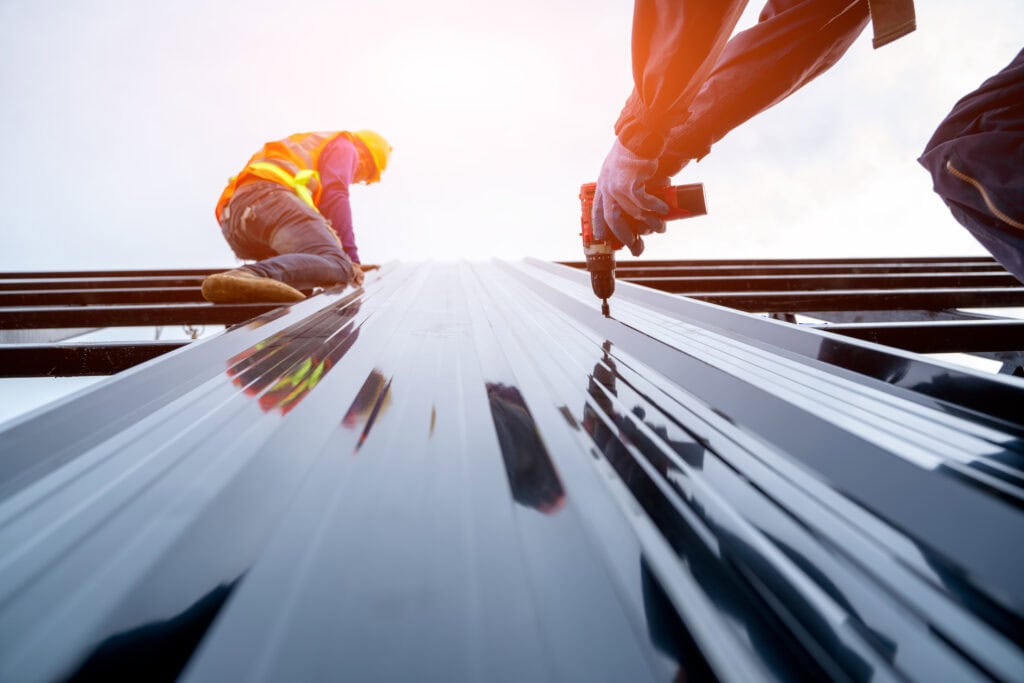
modernising existing structures isn’t merely a matter of compliance: it is a forward-looking strategy.”
Paul Groves, Business development director at ecoduct ltd
Avoiding Unintended Consequences
Retrofitting buildings, especially those with historic characteristics, requires extra care and technical expertise to avoid unintended consequences. For example, failing to consider the fabric construction and ventilation needs of older properties could lead to negative outcomes like mould growth and fabric damage. Regardless of when the building was originally constructed, suitable assumptions of construction method and materials should be applied (where information is lacking) to ensure compatibility with current methods and technologies. Specialist skills and materials may be required to protect existing features and ensure the works undertaken are appropriate to the specific building.
Decarbonisation and Planning
Decarbonisation of heat is undoubtedly a key component to many retrofit projects, however we should also recognise the other benefits retrofit can bring, especially to older or historic properties. Developing a retrofit plan that is sympathetic to a building’s unique needs, and sensitive to the wider opportunities presented by retrofit, such as enhanced cultural value, will lead to a targeted approach with clear project outcomes.
Case study: Bath Abbey Footprint Project by Buro Happold
As a 16th-century Grade I listed building, Bath Abbey required significant retrofit works to futureproof its operations, including replacing the heating system and stabilising the historic floor. The Abbey had a unique opportunity to harness Bath’s natural hot spring water, but there were numerous technical challenges, including water quality assurance and suitable locations for the new heating system. To allow the Abbey to use water from the neighbouring hot springs for the heating system, a closed-loop heat exchange system using Energy Blade heat exchangers was agreed, capable of extracting 160 kW of energy. This system supplies water at 20–25°C to electric heat pumps, which raise the temperature to 50–55°C suitable for the Abbey’s new underfloor heating, and trench heating during milder weather. Extensive trials ensured that submerging the Energy Blades in the “Great Roman Drain” would not impact the nearby Roman Baths. As the site is part of an ancient monument area, multiple consents were required, and a new licence agreement was established between the Local Authority and the Abbey. This project not only safeguards the historic building for future generations while repurposing a wasted local resource, but also continues to attract thousands of visitors each year.
Key Takeaway – Achieving net zero carbon ambitions requires a collaborative approach between asset owners, local councils, and the community. By working together, the potential of underutilised local resources can be unlocked by transforming them into catalysts for sustainable development and climate resilience.
Photo from Buro Happold
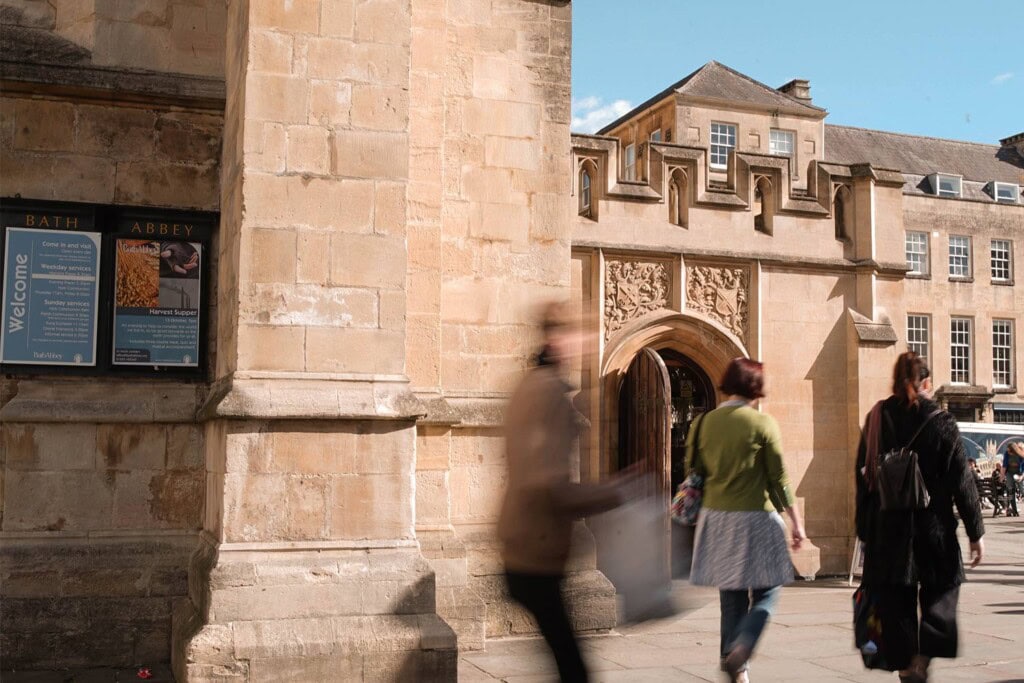
*Useful Resource: The UK’s heritage bodies, Cadw, Historica England, and Historic Environment Scotland, have published a handbook to support developing retrofit skills and qualifications. The handbook emphasises a holistic approach needed in retrofitting heritage buildings. Heritage England also provides technical advice and an advice note which can be a useful resource in providing clarity on typical permissions and other guidance specific to heritage buildings.
Speaking the right language to the right audience will win you half the battles.”
Michelle Wang, Sustainability manager at deloitte
A common thread throughout all the challenges and solutions explored by the group is the importance of stakeholder engagement and management at every stage of the retrofit planning. The first step to a successful engagement strategy is identifying the right stakeholders for each phase of the project from the outset.
To account for everyone’s interests, stakeholder engagement must take place both on the asset level, and within the landlord and occupier organisations to ensure alignment on ambition and expectations throughout. This ensures the intentions of corporate-level ESG commitments (which often drive green investments) are adequately reflected in asset-level decision making and retrofit business cases. Stakeholder collaboration can take many forms – a landlord-occupier forum that meets regularly to discuss ESG topics or a specific working group dedicated to a retrofit project can both be effective if the right people are involved at the right time.
Useful resource: Better Buildings Partnership’s Green Lease Toolkit sets out example drafting language for commercial landlords and occupiers to agree on an approach to cost recovery from works that improve the environmental performance of the building.
Conclusion
Retrofitting non-domestic buildings does present many challenges. However, there are solutions and learnings to be taken forward, and case studies to enable scaling. By showcasing a range of success stories, we hope the discourse around retrofit continues to move beyond carbon reduction benefits, and towards a holistic view capturing opportunities in health and wellbeing, social cohesion, and long-term economic growth.
UKGBC Non-Domestic Retrofit Forum members:
- Amy Holland, MAPP
- Austen Bates, Ramboll
- Bethany Whitehouse, DEFRA
- Chris Newman, Mitsubishi Electric UK
- Claire Murray, Knight Frank
- Deepika Singhal, Hollis Global
- Deepthi Ravi, PLP Architecture
- Emma Georgitsi, Mott MacDonald
- Giulia Jones, MAPP
- Harry Sumner, Bennetts Associates
- Michela Ravaglia, Wates
- Michelle Wang, Deloitte
- Monica Donaldson-Balan, Mott MacDonald
- Nazli Dabidian, CBRE
- Nick Taylor, Building Atlas
- Patrick Swain, Creative Energy Consulting
- Paul Groves, EcoDuct
- Pragya Gupta, Buro Happold
- Ross Russell, Stride Treglown
- Simon David, RSHP
- Ying Gu, Deloitte
- Zeljka Abramovic, DEFRA
Related
UKGBC signs letter in support of the BNG requirements for small sites

UKGBC Trends Report signals growing focus on resilience across the built environment

COP 30 & UK Budget: 7 Key Insights Shaping the Built Environment

Equipping Local Authorities to Drive Action Through Low Carbon Training


